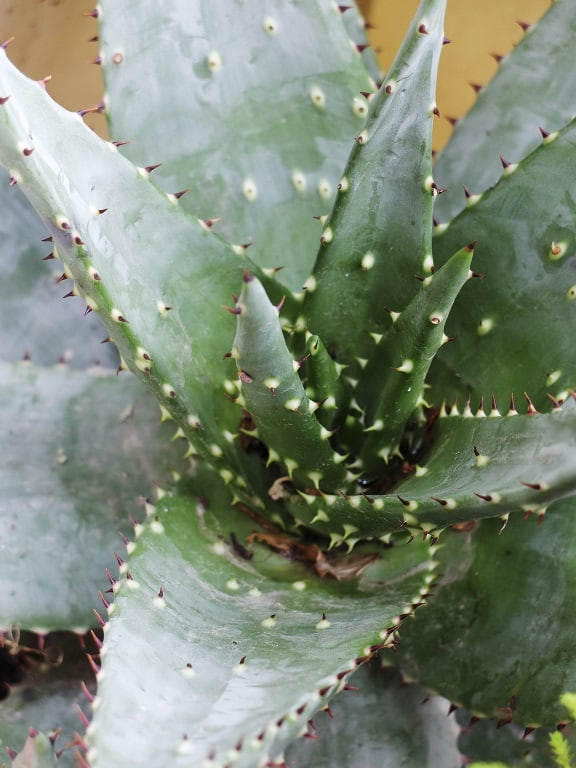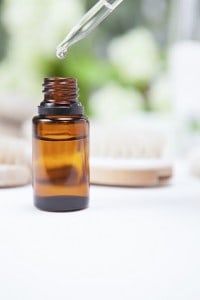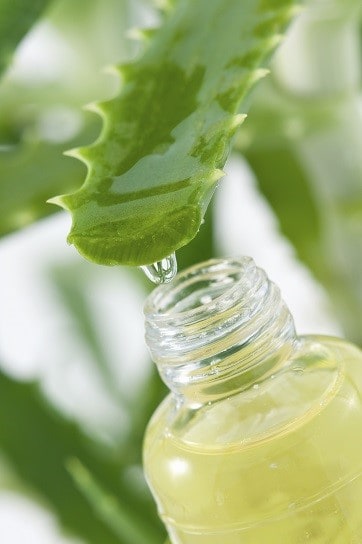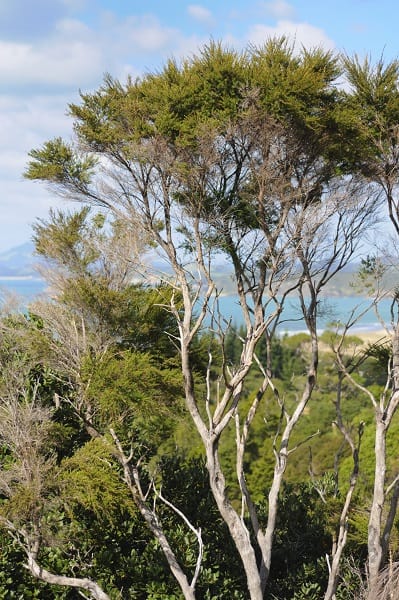 In the dimension of natural acne treatments, there are dozens which tick every box, like inflammation, antioxidants or vitamin E, yet lack a single study directly on acne. With just a small experiment, they could burst into the big leagues, sending shockwaves of clear skin across the oceans and through cities.
In the dimension of natural acne treatments, there are dozens which tick every box, like inflammation, antioxidants or vitamin E, yet lack a single study directly on acne. With just a small experiment, they could burst into the big leagues, sending shockwaves of clear skin across the oceans and through cities.
For example, tamanu oil has a fantastic antibacterial compound called calophyllolide, unique to the plant. However, it could still be counteracted by other, less friendly compounds.
I don’t recommend being overly cautious, tiptoeing around every gamble that could pay off, otherwise you’d never clear your acne. Tamanu oil is one of my most recommended topical treatments anyway.
But it’s great to get confirmation, and thanks to one revolutionary new study, two classic natural remedies have edged closer to the big leagues.
The players in the game
Our study involves three substances hidden in nature…
Propolis – another miraculous bee product, propolis is a sticky resin collected by bees from tree buds and mixed with their own saliva. Bees wearing yellow hard hats use it as their construction glue, filling breaches in their hives.
Like honey, its compounds vary by season, location and hive, but recurring characters include flavonoids, caffeic acid, benzoic acid, and cinnamic acid. Its antibacterial properties are rock solid, particularly against gram-positive bacteria like p.acnes.
Slowly, the acne-clearing studies are trickling in, with this one calming severe acne fantastically. P.acnes was crippled, and the only warning was some irritation. VERDICT: extremely promising with caveats.
Aloe vera – everywhere this green fleshy plant travels, it leaves a devastating trail of clear skin and beauty. Cleopatra and Nefertiti both loved it. Alexander the Great supposedly conquered the Isle of Socotra in 330BC solely to capture its supplies. Its main powers are anti-inflammatory natural compounds like gibberellin, aloe-edodin, and anthraquinones, while its antioxidant supplies are through the roof.
Aloe vera’s best acne study so far was a combination with the topical retinoid tretinoin. Compared to tretinoin alone, the mixture “was significantly more effective… for the treatment of mild to moderate acne vulgaris.” VERDICT: edging towards proven.
Tea tree oil – distilled from the bark of the Australian tea tree, this classic essential oil has decimated p.acnes bacteria in countless studies. The compounds terpinen-4-ol and alpha-terpineol are responsible, and a 2007 study noticed a 3.55 times stronger reduction in acne than a placebo.
The theory is that in its peaceful life in the Australian outback, the tea tree faces a similarly structured bacteria. Only potential irritation can stop it. VERDICT: waiting for its chance.
Erythromycin – a grizzled old war veteran of acne antibiotics, discovered in 1949. Erythromycin was once sprinkled around like confetti, but because of increased resistance among bacteria, clindamcyin has almost replaced it.
Topical antibiotics are superior to oral antibiotics for acne, but I would never recommend them, because they rain down on friendlier strains of skin bacteria like napalm. Nevertheless, erythromycin certainly destroys p.acnes, like a deranged assassin even mobsters are too scared to hire. VERDICT: a blunt instrument.
The study
 60 random citizens were given the honour of participating in a glorious new experiment: a comparison of erythromycin with a natural recipe.
60 random citizens were given the honour of participating in a glorious new experiment: a comparison of erythromycin with a natural recipe.
Its ingredients were 10% aloe vera, 3% tea tree oil and 20% propolis. 20 took nothing, 20 took antibiotics, and 20 took the aloe tea tree, but blissfully unawarely, because this was a double-blind study.
Participants taking medications, contraceptives, who were lactating, and who had sensitive skin or polycystic ovarian syndrome were all sent home, probably with their memories wiped. Participants were banned from looking at, touching, let alone using alternative acne treatments.
The participants spanned 14-34 years, helping both a pimple-plagued teenager and her mother whose acne stubbornly clings on. The scientists measured…
Papules – the foot soldiers, normal red and hard pimples.
Pustules – the big brother which squirts pus every where (you guessed it).
Comedones – clogged pores resulting in a whitehead.
Using them, they calculated two different acne scores. The brainlessly simply total lesion count (TLC), which was papules plus comedones plus pustules, and the acne severity index. ASI is used far and wide, from American universities to snowed-in Siberian research stations. It is simply pustules plus papules x2 plus comedones ÷4.
While the scientists played the waiting game, the chosen ones applied their treatments twice daily: once each in the morning and the afternoon.
Finally, after 30 days, they woke up squinty-eyed to a bright, shining clear skin future. In the aloe vera/tea tree oil/propolis combo, total lesion counts had fallen by 63.7%, while the acne severity index decreased by 66.7%. It took just 15 days for acne to beat a retreat, scoring 33.56% and 31.6% respectively.
Meanwhile, erythromycin reduced acne with the time-tested reliability of a rusty dentist’s drill: 43.5% for TLC and 49.7% for ASI, a perfectly expected result.
TLC fell by 23.6% after 15 days, while ASI fell by 27.1%. Efficient, yet noticeably less than the natural recipe. The forgotten and neglected placebo could only muster 9.9% and 4.52% reductions after 30 days.
Individual acne types
To the sound of wine glasses chinking together in antibiotic HQ, erythromycin reduced comedones by 42.1% compared to 38.2% after 30 days…
…but aloe vera/tea tree oil was more effective for all other acne, including pustules (58.7% vs 44.1%) and papules (61.4% vs 45.4%).
Sebum output was also measured, your skin’s industrial oil pumps. Some topical treatments work by calming inflammation, while others such as green tea bind to enzymes like 5-alpha reductase which downregulate sebum production.
Neither aloe vera nor tea tree are suspected of controlling sebum production (though it’s still possible), but propolis is, because of its isoflavones and tannins. Sebum fell to 86.8% of original levels after 15 days, but reversed to 95.3% after 30 days.
Their verdict: no significant changes in “sebometry”, probably just noise, and erythromycin was even weaker. The same was true for PH levels, starting at 4.99 and ending at 5.02, which is excellent news. The acid mantle is your skin’s firewall, which burns up approaching viruses like a comet from outer space.
Also measured was erythma (swelling), for papules, healthy skin, and erythematous scars. The natural remedy calmed all of them, including papule swelling, with erythromycin on its tail and the placebo in no man’s land.
Last, but definitely not least, the aloe vera/tea tree oil/propolis combo did NOT irritate the patients’ skin.
A nail in the coffin for acne antibiotics
 The problem with dozens of acne studies, promising as they are, is that they don’t exist in the real world. They might only test aloe vera on isolated human skin cells, or worse, individual inflammatory chemicals in a petri dish.
The problem with dozens of acne studies, promising as they are, is that they don’t exist in the real world. They might only test aloe vera on isolated human skin cells, or worse, individual inflammatory chemicals in a petri dish.
Well, this study is on living breathing humans. It’s hard evidence right here, right now, that time-tested ingredients from the wild can clear acne superbly. The two plants are created by nature, with countless obscure polysacharides, alcohols, and flavanols. Meanwhile, a side effect ridden designed to rain doom over bacteria failed to beat them.
Aloe vera has always seemed like the bane of acne, and the evidence pile is now one inch taller.
This is a war of the natural and the artificial, and it’s a war that the natural won. You have to begrudge the old war horse of erythromycin some success, but its time in dermatology clinics is short. Resistance is building and building. In fact, the scientists were forced to hunt down non-resistant patients who had used the antibiotic recently to success.
People sometimes insist that natural topical treatments are promising, sure, but simply feeble compared to professional pharmaceutical weapons. This study disproves that with a 66.7% reduction.
Scientist themselves often add lines like this: “we urge caution, as further, more rigorous studies are required to establish aloe vera’s effectiveness“. Their wait is over; this is one of those studies.
What’s great is that the specific powers confirm our suspicions. If you wanted to brew a thick soup of anti-inflammatory goodness, tea tree oil and aloe vera would have been my number one recommendation.
The weaknesses of the study…
Make no mistake that the debate isn’t settled once and for all. We’re not locking acne up and throwing away the key yet. Firstly, we have three ingredients, and no way of identifying which was specifically responsible.
Maybe propolis was the sole saviour, because at 20%, it formed the largest constituent of the recipe. People trying tea tree oil based on this study could be bitterly disappointed. They could even give up on natural remedies altogether, throwing in the towel needlessly. Nothing is proven.
Secondly, propolis’ theorised sebum-reducing properties failed to materialise, and there’s no evidence that aloe vera or tea tree oil can counteract them. 30 days may be short for an oily skin treatment, but ECGC extracted from green tea lowered sebum production by 35% in that time.
The patients also supposedly carried non-resistant bacterial strains, but p.acnes has hundreds of different strains. What if 30% were secretly resistant? With full strength, with no brick walls in the way, erythromycin could have trampled the natural recipe.
Thirty days might be too short to analyse side effects, particularly slow and sensitisation. The biggest flaw was undoubtedly the exclusion of people with sensitive skin, and allergic contact dermatitis.
The scientists clearly wanted a fair test, but essential oils are notorious for random inflammation. In the real world, sensitive skin walks among us. Aloe vera is fairly gentle, and the ancient Egyptian royalty of 4000 years ago agreed, but its mind-boggling complexity gives an unknown polysaccharide a chance of danger.
…are outnumbered by its strengths
Overall though, the study’s reliability is undeniable, starting with a wise 3 month cut off time for any previous acne treatments. Switching instantly from inflammatory chemicals to soothing aloe vera could have seriously distorted the results, but this study rules that out.
20 participants for each team was slightly low, but easily high enough to make a judgement. The recipes didn’t contain chemical filers that could have warped the results. The patients were a healthy mixture of teenagers and adults, clearing acne across the generations.
There was even a healthy mixture of ethnicities, and study was double-blind, the gold standard of medical research. Who knows what could have happened: if a patient had read a pamphlet extolling aloe vera’s benefits two weeks earlier, his reduction in acne could have solely been down to happiness and lower stress levels.
It’s true that we cannot pinpoint which natural remedy cleared acne most strongly, but this is also beneficial.
Across the world, people are combining natural remedies all the time, from Hollywood mansions to Indian valleys. This study mimics reality, showing that a classic natural recipe can succeed wildly. The ingredients could even have synergistic benefits, and unlike oily skin, 30 days is perfect for testing anti-inflammatory properties.
With some acne studies, you have to consider whether the milk was grass-fed or grain fed. You have to consider whether the chocolate was too sugary or whether the honey smeared on their face was pasteurised. This study has no such glaring flaws or questions.
BONUS: the end of acne-causing toothpaste ingredients
 Strangely, aloe vera and tea tree oil were also teamed up in 2019 for a completely unrelated study: tooth decay.
Strangely, aloe vera and tea tree oil were also teamed up in 2019 for a completely unrelated study: tooth decay.
152 school children aged 8-14 years were given mouthwashes, either 1) a placebo, 2) diluted tea tree oil (not pure!), 3) aloe vera, or 4) chlorhexidine, a powerful mouthwash chemical.
After 4 weeks of daily use, the tea tree oil and aloe vera stood toe to toe with the chemical, and easily defeated the distilled water. After discontinuing for two weeks, the children still enjoyed benefits. The classic cavity bacteria Streptococcus mutans was scattered and disorganised, unable to fulfill its cavity drilling mission. Plaque was washed away in a cleansing flood.
It all started in 2017, when the exact same foursome was tested. 2% chlorhexidine was the most powerful, but 1% aloe vera and 1% tea tree oil were right on its heels, causing a crisis in enamel-nibbling bacteria colonies. The scientists concluded that “natural antibacterial agents like tea tree oil and aloe vera could be effectively used as cavity disinfectants“.
You know what this means? Toothpaste is riddled with acne-causing chemicals, like fluoride and sodium lauryl sulfate, which absorb into the bloodstream and increase inflammation levels. They also deplete the acne-clearing antioxidant glutathione, which is forced to detoxify them instead.
The future could hold natural toothpastes where you don’t have to sacrifice your teeth to get clear skin, and aloe vera, tea tree oil, and also neem, theobromine, and coconut oil could be the stars.
Like acne itself, research on natural toothpaste ingredients is trundling along, slowly but surely, yet flying under the radar of mouthwash dealers.
The verdict
The biggest flaws with this study are easily the lack of patients with sensitive skin, and the clouded vision of precisely which topical treatment was so amazing.
Nevertheless, the the credibility of aloe vera and tea tree oil just skyrocketed. If anything, a 66.7% reduction in acne is bigger than expected.
Despite the non-sensitive skin, the complete lack of side effects is still excellent news (with limits), given propolis’s irritation in one study. It’s possible that aloe vera was a calming influence on tea tree oil, making them the ultimate tag team.
The hidden gem is that aloe vera and tea tree oil totally lived up to our expectations. They’re still recommended for inflammation and antibacterial properties respectively. With luck, this will also be true for rising stars like tamanu oil or argan oil.
We are now witnessing the old theories translate into reality before our very eyes.
Thanks for reading!